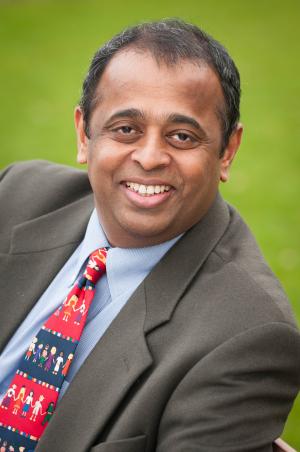“If you touch the core of humanity, there is always big business in it,” according to Rajesh Sahadevan, CEO of Centre of Gravity, a Bagalore-based firm that does brand strategy and communication design. He always begins projects with wide-ranging conversations. He doesn’t consider them interviews or research because that creates an artificial frame that can result in superficial interactions. “If you understand customers as human beings, you understand everything.” He believes the respect and insight that comes from not just a collection of data but extended engagement will lead to more effective, durable solutions.
In an executive education session at the Global Network for Advanced Management’s 5th Anniversary Symposium, Sahadevan and Murali Chandrashekaran, Fred H. Siller professor of marketing and behavioral science at UBC Sauder School of Business, examined the potential impact of a design-thinking approach that is particularly focused on core human needs and motivations at every phase of creating and implementing a business solution.

As an example, Chandrashekaran offered the Aravind Eye Hospital. The nonprofit was founded by Dr. Venkataswamy, who upon retiring as an ophthalmologist in 1976 decided to address treatable blindness among the poorest in India.
Chandrashekaran explained that Aravind has become the world’s largest and most efficient eye-care provider in part because of the way Dr. Venkataswamy framed the work he and his team were doing, “It’s ourselves we are helping. It’s ourselves we are healing.”
Aravind is a nonprofit that looked to McDonalds for a model of assembly-line efficiency and reach. It expanded into a network of hospitals, clinics, and traveling eye care camps to better reach India’s poorest people. It developed vertical integration from manufacturing intraocular lenses at 1/50th market cost to training ophthalmologists to a research arm that develops new treatments. And today, Aravind surgeons perform 50% as many cataract procedures as the entire UK health system at 1% of the cost, with equal or better outcomes.
Chandrashekaran argued combining the human need for meaningful work and the scale of the need fed a fierce drive for solutions. The human-centered approach created an organization that put tremendous pressure on costs, sought innovation, and pushed for operational excellence. The result was a sustainable model where paying customers—who come for the quality—subsidize the care for those who cannot pay. During the 2016 fiscal year, Aravind saw more than 3.7 million out-patients with over 1.7 million receiving treatment for free. Out of 408,220 surgeries, 202,090 patients paid nothing.
Acknowledging that we live in complex, dynamic times where multidimensional societies create needs that are inevitably in conflict and solutions will never offer silver bullets, Sahadevan and Chandrashekaran said that leaders who take a human-focused approach to meaningful work, combined with smart application of business tools, can produce remarkable results in any sector.

